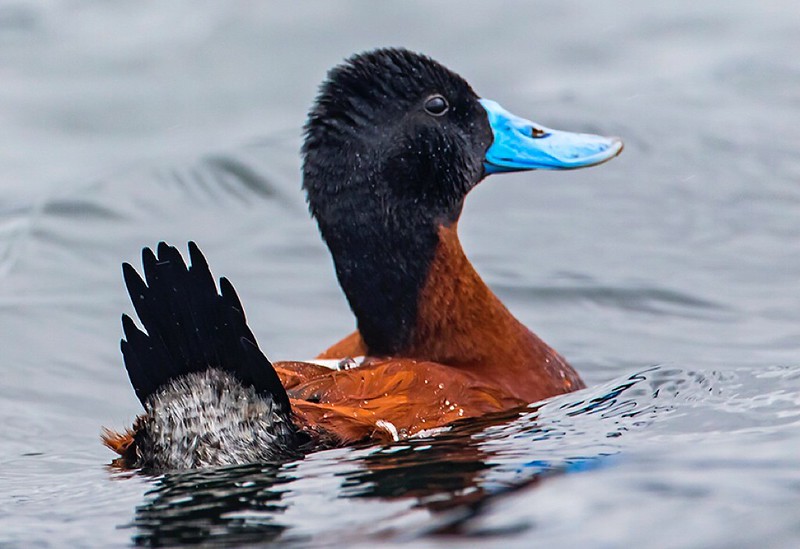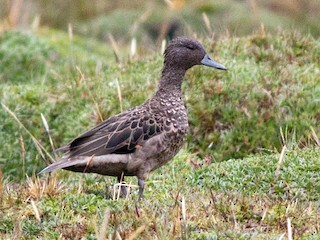Andean Duck


Scientific Name
Oxyura ferruginea
Alternative Names
Andean Ruddy Duck
Measurements
| Feature | Male | Female |
|---|---|---|
| Length | 35–43 cm (14–17 in) | Slightly smaller |
| Weight | 500–800 g (1.1–1.8 lb) | Slightly lighter |
| Wingspan | About 60–70 cm (24–28 in) | — |
Status
Listed as Least Concern on the IUCN Red List, with stable populations throughout its Andean range.
Identification
A small, compact stiff-tailed duck with a stout blue bill in breeding males and a long, cocked tail. Breeding males have chestnut bodies, black heads, and bright blue bills. Females and non-breeding males are brownish-gray with a blurred cheek stripe. Distinguished from the ruddy duck by its all-black face and slightly larger size.
Voice
Generally quiet; may emit soft grunts or low whistles during courtship.
Diet
Feeds by diving for aquatic vegetation, seeds, insects, and small crustaceans. Uses its broad bill to sift food from the water and mud.
Distribution
Native to the Andes Mountains of Colombia, Ecuador, Peru, Bolivia, and Chile, sometimes extending into northern Argentina.
Habitat
Prefers marshy lakes, ponds, and high-altitude wetlands, often surrounded by dense emergent vegetation.
Breeding
Breeds in dense marsh vegetation near water. The female builds the nest from grasses and reeds, concealing it well among tall plants. A typical clutch contains 5–15 eggs. Both parents protect the brood after hatching.
Wintering
Resident species with minimal migration, though it may move locally in search of suitable wetlands.
Conservation
Currently stable, but habitat degradation and wetland drainage pose potential threats in parts of its range. Protection of Andean wetlands remains vital for its continued survival.
